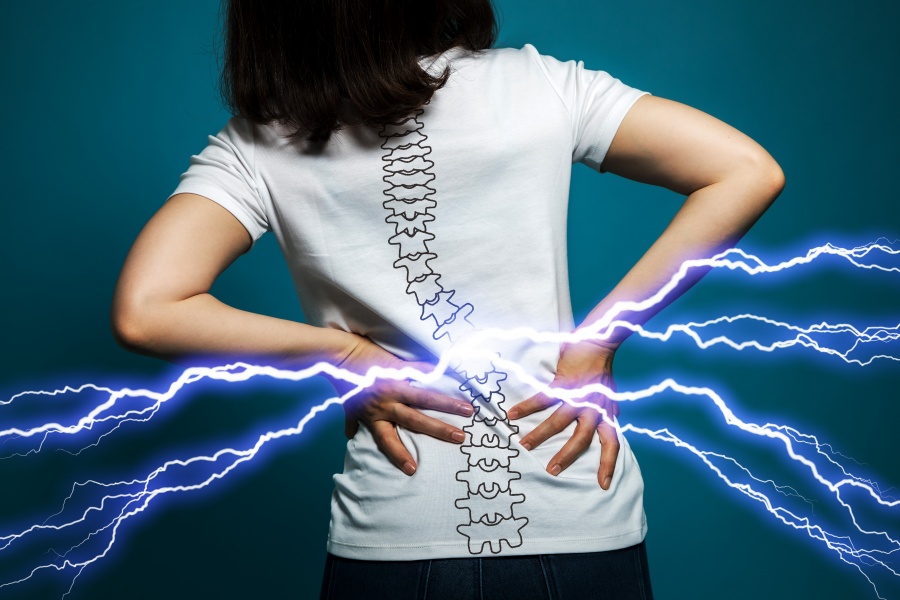
Lower back pain makes it hard to fall asleep, and it can startle you awake at any hour of the night.
To help you reclaim your sleep schedule, here is a simple guide to sleeping with lower back pain:
Sleep on your side to relieve pain from a pulled back muscle
One of the most common causes of lower back pain is a pulled back muscle, which occurs when a muscle in your lower back is strained or torn as a result of being over-stretched. Symptoms from a pulled back muscle typically resolve within a few days, but the intense pain can make it difficult to fall asleep at night. Worse yet, the longer you lie in the bed, the more deconditioned your body gets and the worse your symptoms may become.
No single sleeping position works for every person with a pulled back muscle, but a good place to start is to test sleeping on your side. When sleeping on your side, try the following:
- Avoid a tight curled-up fetal position (knees pulled in toward the body), and instead, sleep with your body slightly elongated.
- Slip a slim pillow between your knees to support the natural curvature of your spine.
- Find a head pillow that holds your head midway between each shoulder. If your pillow is too thin or too thick it can bend your neck at an uncomfortable angle.
You may also benefit from wearing a disposable heat wrap to bed to help alleviate the pain from a pulled back muscle. These wraps deliver muscle-relaxing, low-level heat over the course of several hours—and so they may help you both fall asleep faster and stay asleep longer.
Listen to soothing audio
When your lights go out and your head hits the pillow, almost all of the stimuli that have held your attention during the day dissipate, and you tend to focus more on your back pain. As you pay more attention to your back pain, your anxiety can start to rise—which in turn often makes it harder to fall asleep.
The practice of listening to various forms of soothing audio can relieve both your anxiety and your experience of back pain by redirecting your focus away from your symptoms. Several nighttime audio options you can try include:
- Classical music
- Audiobooks intended for children
- Relaxation podcasts
Regardless of what kind of audio you choose to play, make sure it is free of harsh sounds or intense plot lines.
Don’t skimp on your mattress
If you scour the internet, you will discover all sorts of suggestions to extend the life of a sagging mattress. These include methods like sliding plywood under your mattress and ditching your box spring. While these tricks may work for some, the best approach is usually to replace a worn-out mattress.
It is important not to neglect your mattress because, for some people, a sagging mattress can exacerbate lower back pain by placing additional stress and strain on your spinal structures. In turn, this can make it harder to fall asleep at night.
When it comes to sleeping with lower back pain, the most expensive mattress is not always best. Instead, the best mattress for you is ultimately the one that provides the best night’s sleep. With this in mind, here are a few tips to help get you started in your mattress search:
- Your mattress needs to support the natural curvature of your spine. This means your spine should look similar when you are lying on your back or side as when you’re standing with good posture.
- Visit your local mattress store and try out various types of mattresses. After 15 minutes on a mattress, you will have a general idea if it is a good fit for you. Don’t be afraid to take your time.
- If you sleep with a partner, consider a larger-sized mattress. This will allow you both room to sleep without startling one another awake at night.
I hope all of the above advice will help you find relief from your lower back pain and enjoy a more restful night’s sleep.
Precision Pain Care and Rehabilitation has two convenient locations in Richmond Hill – Queens and New Hyde Park – Long Island. Call the Richmond Hill office at (718) 215-1888, or (516) 419-4480 for Long Island office, to arrange an appointment with our Interventional Pain Management Specialist, Dr. Jeffrey Chacko.













